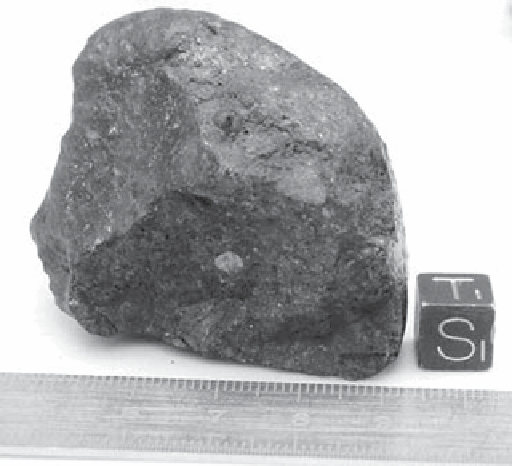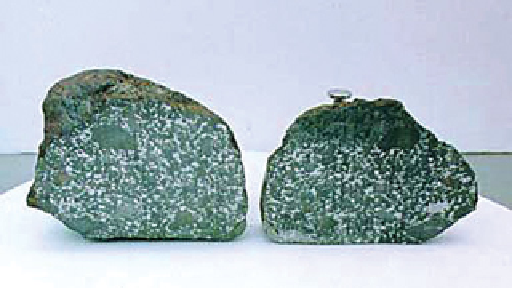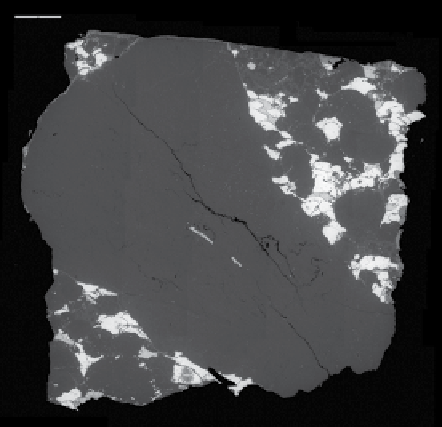Geology Reference
In-Depth Information
Ungrouped chondrite
213.389 g
Found January 15, 1996
6.5 × 4.0 × 4.0 cm
Weathering = C
chondrites, such as CH and CB chondrites, but there are a few meteorites
that are metal rich yet have affiliation with ordinary chondrites. The
processes that led to the formation of metal-rich chondrites were therefore not
confined to just carbonaceous materials but instead must be more wide-
spread. Therefore, understanding these chondrites can lead to a more general
understanding of nebular processes.
,0
,17
GRO 95551
Wfrd RC
Chondritic Clasts
Bencubbin
4
Ben OC
CR
LL
Weatherford
GRO 95551
L
DI
H
Ben DI
2
Wfrd OC
GRO 95551
0
TF
HH 237
Whole Chondrite
QUE 94411
CR Chondrites
CH Chondrites
Bencubbinites
GRO 95551
-2
Weatherford
Bencubbin
CV
-4
-2
0
2
4
6
8
10
12
δ
18
O (‰)
Plate 23
MiNERALogy
SigNiFiCANCE
The meteorite is a breccia with chondritic, carbonaceous,
and enstatite-rich clasts. The chondritic clasts (up to 15+ mm)
consist of chondrules and chondrule fragments (up to
1.8 mm across; mainly Fa
1-2
; pyroxene, Fs
1
) in a matrix of
nickel-iron metal with minor troilite. The enstatite-rich
clasts are up to 11 mm across and consist of highly
shocked enstatite (or clinoenstatite), and the fine-grained
carbonaceous clasts are as much as 3.6 mm across.
The meteorite is anomalous and resembles bencubbinites.
NWA 5492 and gRo 95551 likely represent a new type
of chondrite with affinities to both E and H chondrites.
oxygen isotope compositions that plot near the TF line
(right, [136]), combined with lack of any evidence of
hydrous alteration, suggest their formation in the inner
solar system, making them possible analogues of the
materials that accreted to form the inner planets.
References [134-137]






